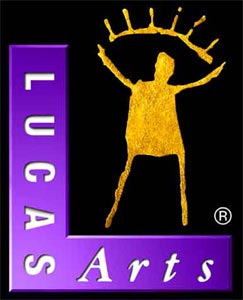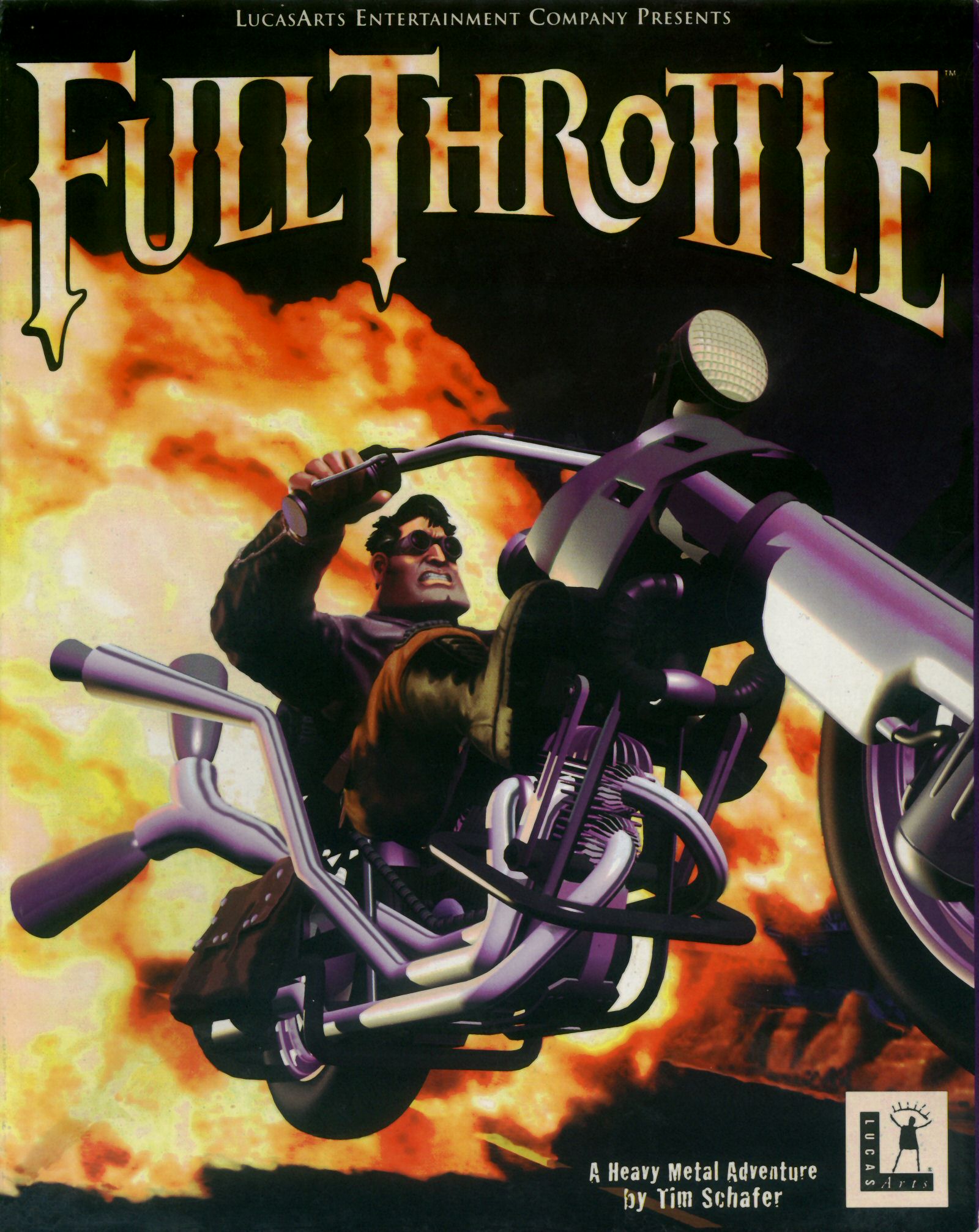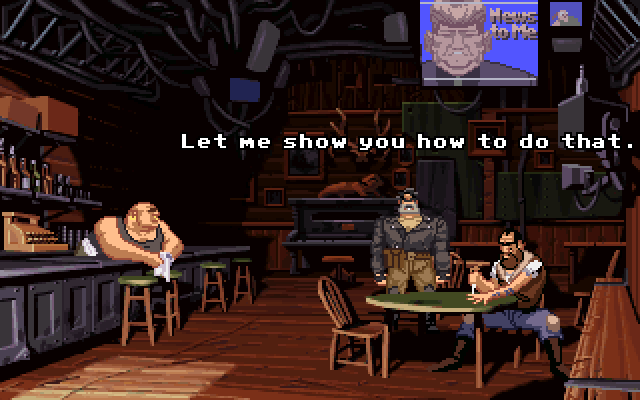This post has not been edited by the GamesBeat staff. Opinions by GamesBeat community writers do not necessarily reflect those of the staff.

Classics seem to be the business LucasArts was in during the 90's. Allow me to introduce you to the four LucasArts games worth a damn…Full Throttle (1995), Grim Fandango (1998), Sam & Max (1993) and The Secret of Monkey Island (1990). While almost commonplace to list the titles I have, it is obvious how brilliant these games are. Each game littered with distinctive characters and writing so full of wit and charm; it is a shame they laid the foundation for Star Wars Jedi Knight: Jedi Academy. Of the four games listed, Full Throttle and Grim Fandango are the "Best of Show" in my opinion. I'm well aware of how revered Sam & Max, as well as Monkey Island, are but feel Full Throttle and Grim Fandango are just better games. Maybe it is because they came after Sam, Max, Guybrush and LeChuck and benefited from lessons learned? Could it be the writing is better, level design more fluid and stories slightly more entertaining than Sam & Max and The Secret of Monkey Island? Full Throttle and Grim Fandango (pssst, so was Monkey Island) are designed and/or co-written and/or blessed by Tim Schafer, an industry vet and the creative mind behind some of the most enjoyable games I've played. He even gets a mulligan for the terrible Brutal Legend; I love the man's work, but the game is total shit. When I first played Full Throttle, I thought I had out-grown the point and click adventure game. I was 18yrs old, busy chasing ass and dodging class and just did not feel games were a significant part of my life. My family was rocking a Compaq Presario running Windows 3.1 and I just hated using the damn thing. That is a time in my life where I had taken control over my geek outbursts. Women were the main focus, fuck playing a damn video game, let alone talking about one. I was cooler than a polar bear's toenail (or so I thought) and had allowed gaming to become a taboo pleasure I dare not speak of about in the company of my "super-cool" friends at the time.

Rusty as all hell and not particularly interested in PC games, I listened to a classmate and gave Full Throttle a try. The game opened up with some pretty impressive cinematic cut scenes for the time. Players take on the role of Ben, leader of the biker gang, The Polecats. While riding down Highway 9, Ben garners the attention of Malcolm Corley, one of the last motorcycle manufacturer's left. In Full Throttle's world, hovercrafts were taking over. This posed an obvious problem for Mr. Corley and his motorcycle business. As with most "corporate big wigs" not willing to change with the times, with a dark underling VP who IS willing to change, Full Throttle was as predictable as it was short. Under most circumstances, I would have expressed slight disappointment. It has a charm and cast of characters that kept me playing and had me interested in the story, even if I had a clear idea how it would play out. Nestor, Mo, Ben, the Cavefish, Rottwheelers and Vultures all deserved a sequel, scratch that, OWED a sequel. If not a complete sequel, just give us Emmit's knife between the fingers mini game and call it even.

Damn that minigame could have a player feeling like Bishop (look up the reference)! There were even amusing little nods to other Lucas properties and games scattered throughout. For example, some of characters in the Vultures crew were named Wendy, Sid and Razor; all the names of characters in Maniac Mansion. There was also a time wherein Ben is involved in a conversation with the reporter character of the game, Miranda (who is hiding in a dumpster). Her last words to Ben before he sets off are "Help me, Ben, You're my only hope!". I remember the phrase taking a full 20 minutes before I realized why that sounded so familiar, it was a variation of Princess Leia's famous call for help to Obi-Wan Kenobi. Clocking in at around 10 hours and with hardware requirements laughable by today's standards, Full Throttle is a timeless game which anyone who plays games should be familiar. If not, Andy Dick's taint has better taste in games. Yeah I said it. Download the game, play it, beat it, love it.

With Full Throttle taking hold my interests in the adventure genre once again, it was Grim Fandango in 1998 that solidified my hatred of LucasArts, George Lucas, that movie Lucas with Cory Haim and Lucas Haas. I say hate because in the 12 years since I've played it there has yet to be a game to complement its quality (overall) from LucasArts, LucasGames or whatever the hell they call themselves. Anyway, 1998 was the year my attention was solely on the PlayStation and Resident Evil 2. Hearing the whole "Land of the Dead" setting was enough to get me to the mouse and keyboard, it was what unfolded on-screen that kept me playing. As Manny Calavera, travel agent to the souls of the dearly departed, Manny uncovers a seedy operation where top travel accommodations for the souls are being bogarted for the boss of the criminal underworld, Hector LeMans. I know this at first glance sounds lame, so let me explain. In Grim's world, when a person dies their soul is assigned a Department of Death travel agent. From here, it is determined if the soul must travel 4 years by foot or 4 minutes on the Number Nine train. Manny's hit a patch of 4 year travelers and in an effort to keep his job, steals the client of associate Domino Hurley. That single act is what uncovers the misdeeds of the Department of Death and sets in motion the story of Grim Fandango, a tale of redemption. Conceptually, I adored the Calaca inspired characters. They were utterly beautiful.

Grim Fandango also utilized the same point and click system, but mixed in a setting and story uniquely delightful. It also did not use the S.C.U.M.M engine, rather a successor was born, GrimE. Outside of the graphical upgrade of the engine, the text box interaction menu system also received an update. Full Throttle had updated the menu by no longer using the previous Push, Pull, Open, Close menu and opting for the options appearing over an object or person highlighted by the mouse. Grim Fandango elevated it once again by removing the mouse highlighting mechanic by having Manny turn his head to an object or person of interest. I think this added to Grim feeling like an animated movie. There was not text cluttering the display and screen real estate was maximized. The flow of movement and investigation was not hampered by distracting words all over the place. The only thing distracting was Glottis, the orange demon that reminded me of Rudolph from Looney Tunes. Part mechanic, part pianist, Glottis was the sidekick, companion character that players love/hated…at least I did. If you can get either of these titles, do yourself a solid and play them. They are worth it!
